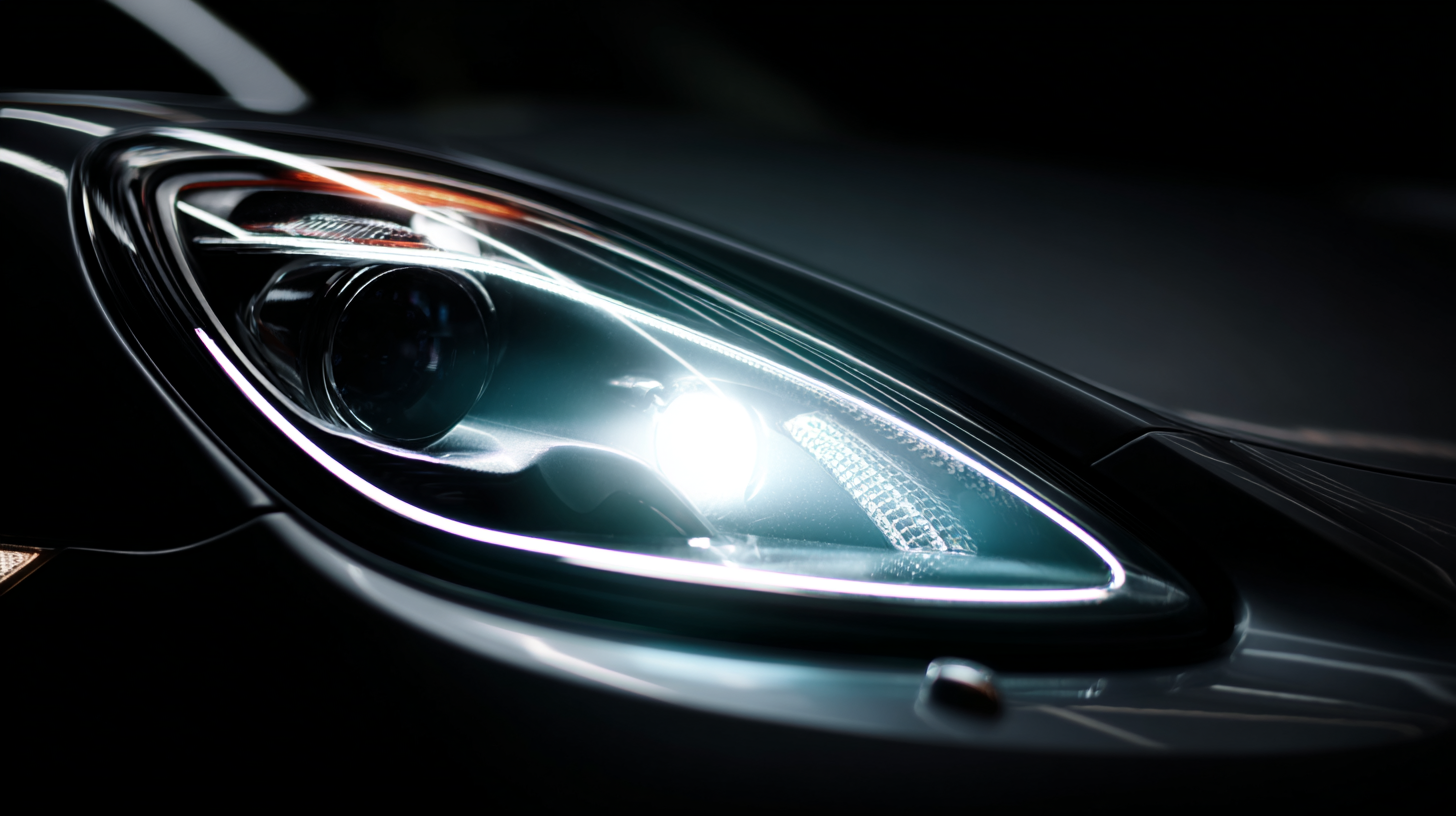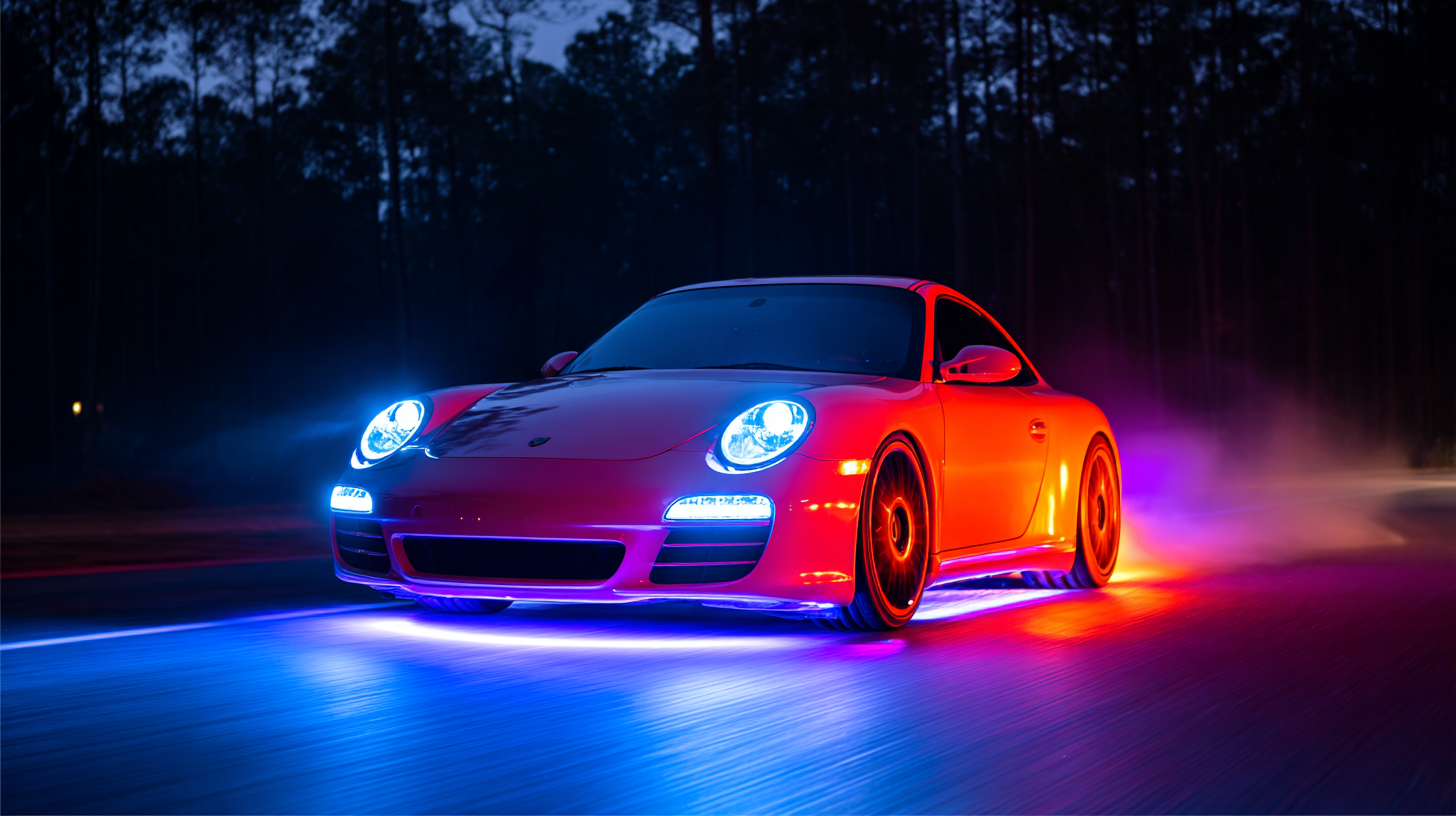As the automotive industry continues to evolve, innovations in car light technology are set to transform the night driving experience significantly. According to a report by the National Highway Traffic Safety Administration, 49% of fatal accidents occur in the dark, highlighting the critical importance of effective lighting systems. Advances such as adaptive headlights, laser lighting, and LED technology are not merely enhancements but pivotal changes designed to enhance road safety and visibility.

Furthermore, a study from McKinsey & Company indicates that the car light market is projected to witness a growth rate of 6.5% annually, reflecting an increasing demand for advanced lighting solutions. This article explores the top five innovations in car light technology that promise to revolutionize how we approach night driving, ensuring that both safety and comfort are prioritized on the roads.
Adaptive headlight systems represent a significant leap forward in car light technology, drastically improving night visibility for drivers. Unlike traditional headlights that provide a fixed beam of light, adaptive headlights adjust their direction and intensity based on various factors such as vehicle speed, steering angle, and road conditions. According to a 2022 report by the Automotive Lighting Market, adaptive headlight technology can enhance visibility by up to 150% in challenging driving environments, significantly reducing nighttime accidents.
In recent studies, the effectiveness of adaptive headlights has been underscored, revealing that vehicles equipped with these advanced systems can reduce glare for oncoming traffic while enhancing the illumination of curves and road signs. A report from the National Highway Traffic Safety Administration (NHTSA) indicated that adaptive lighting could potentially decrease nighttime crash rates by nearly 30%. This innovation not only offers a safer driving experience but also enhances overall nighttime aesthetics and functionality, making after-dark travel more comfortable and secure for all road users.
The introduction of Matrix LED technology represents a groundbreaking advancement in automotive lighting, significantly enhancing night driving experiences. By utilizing a sophisticated array of individually controlled LED units, Matrix lights can adapt in real-time to various driving conditions. This innovation allows for precise illumination of the road while simultaneously reducing glare for oncoming drivers. According to a report by the International Organization of Motor Vehicle Manufacturers, the implementation of Matrix LED systems could potentially minimize nighttime collisions by up to 20%, a crucial factor in improving road safety.

Furthermore, Matrix LED technology employs features such as adaptive high beams that can automatically dim sections of light to avoid dazzling other vehicles. A study conducted by the Society of Automotive Engineers found that 80% of drivers reported less discomfort and improved visibility when driving with adaptive lighting systems. This not only enhances the driving experience for individuals but also contributes to a more considerate driving culture, significantly lowering the risks associated with nighttime driving. As Matrix LED technology continues to evolve, it promises to redefine standards of vehicle illumination and safety on the road.
Automatic high beam control (AHBC) is transforming the way we drive at night, enhancing safety and visibility for all road users. According to a report from the National Highway Traffic Safety Administration (NHTSA), nighttime driving incidents account for nearly 50% of all fatal crashes, despite only representing about 25% of total driving time. This alarming statistic highlights the urgent need for innovations like AHBC, which automatically toggles between high and low beams based on surrounding traffic conditions and light conditions.
Recent advancements in sensor technology and artificial intelligence have made AHBC systems more reliable than ever. Research from the International Council on Clean Transportation (ICCT) indicates that vehicles equipped with AHBC can improve nighttime visibility by up to 50%, significantly reducing the risk of accidents caused by poor illumination. As these systems become standard in new vehicles, they are set to revolutionize nighttime driving, allowing drivers to navigate dark roads with greater confidence and less reliance on manual adjustments. This innovation not only promotes safer driving practices but also exemplifies the automotive industry's commitment to enhancing road safety through technology.
| Innovation | Description | Benefits | Adoption Rate (%) |
|---|---|---|---|
| Automatic High Beam Control | Automatically adjusts the headlights between high and low beams based on oncoming traffic. | Improves visibility for drivers; reduces glare for other road users; enhances overall safety. | 45% |
| Adaptive Headlights | Headlights swivel to follow the direction of the steering wheel, providing improved illumination around curves. | Increases visibility at turns, reducing the risk of accidents. | 30% |
| LED Headlight Technology | Utilizes LED lights for superior brightness and efficiency compared to traditional halogen bulbs. | Longer lifespan, lower power consumption, and enhanced visibility. | 60% |
| Matrix LED Technology | Integrates multiple LED segments that can be activated or deactivated independently for improved visibility. | Maximizes illumination while minimizing glare for other drivers. | 25% |
| Daytime Running Lights (DRLs) | Lights that remain on during the day to increase the vehicle's visibility to other drivers. | Improves the safety of vehicles on the road. | 75% |
 Laser lighting technology is emerging as a game-changer in the automotive industry, particularly for enhancing night driving experiences. This advanced lighting solution provides significant benefits over traditional halogen and LED lights, primarily through extended range and superior clarity. According to a report from the Society of Automotive Engineers (SAE), laser lights can illuminate the road up to 600 meters ahead, which is nearly three times farther than standard headlights. This extended range allows drivers to react more swiftly to potential hazards, ultimately enhancing safety during nocturnal travel.
Laser lighting technology is emerging as a game-changer in the automotive industry, particularly for enhancing night driving experiences. This advanced lighting solution provides significant benefits over traditional halogen and LED lights, primarily through extended range and superior clarity. According to a report from the Society of Automotive Engineers (SAE), laser lights can illuminate the road up to 600 meters ahead, which is nearly three times farther than standard headlights. This extended range allows drivers to react more swiftly to potential hazards, ultimately enhancing safety during nocturnal travel.
Moreover, laser headlights produce a concentrated beam of light that mimics daylight quality, offering unparalleled clarity. A study by the National Highway Traffic Safety Administration (NHTSA) indicates that improved visibility can reduce nighttime accident rates by as much as 20%. The precision of laser lighting minimizes glare for oncoming traffic while providing optimal visibility for the driver, making night driving a more secure and comfortable experience. As manufacturers continue to integrate this technology into vehicles, it is anticipated to revolutionize how we navigate the roads after dark, paving the way for safer journeys.
Innovative night vision systems are transforming the way drivers perceive their surroundings after dark, offering enhanced safety that goes beyond conventional headlights. According to a report by the National Highway Traffic Safety Administration (NHTSA), nearly 50% of road fatalities occur at night, even though only about 25% of travel takes place during those hours. This alarming statistic highlights the critical need for advancements in automotive lighting technology.
Modern night vision systems utilize infrared sensors to detect pedestrians, animals, and other obstacles in low-light conditions, projecting this information onto a display within the driver's line of sight. Studies from the Society of Automotive Engineers (SAE) indicate that such technology can improve reaction times by up to 30%, significantly reducing the risk of nighttime accidents. These systems not only illuminate what's ahead but also enhance situational awareness, allowing drivers to make informed decisions.
Tips for drivers using night vision systems include ensuring proper calibration and understanding system limitations. Familiarizing yourself with how to interpret the night vision display can further enhance your driving experience. Additionally, always combine night vision assistance with standard headlight use to maximize your visibility and safety on the road. Stay informed about your vehicle’s technology to optimize your driving under the stars.





